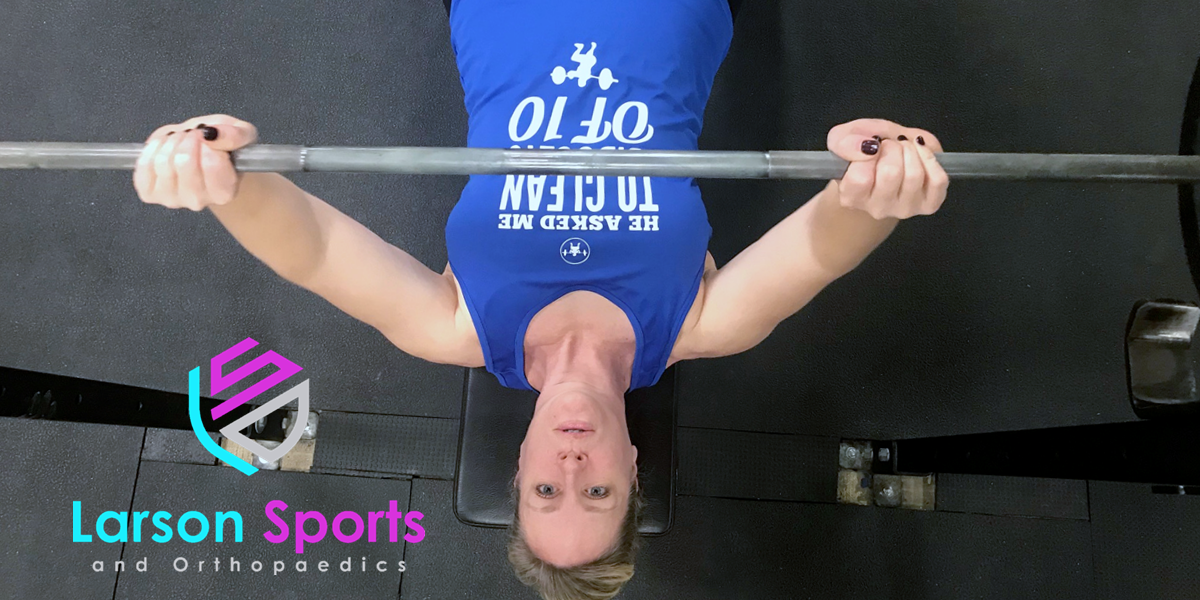One of the more common questions I get is about bench pressing and shoulder pain. People often get shoulder pain from working out. One of the most common exercises this occurs during is the bench press.
People want to keep exercising, but find the pain worrisome as well as difficult to adjust to. It’s a common question I see in online forums and one that people ask in my clinic a lot.
If the shoulder hurts only during bench press or push-ups, you probably haven’t injured it too badly. You should be able to make the following adjustments and get back on track.

Dr. James Larson is an orthopedic surgeon specializing in sports medicine and arthroscopic surgery. He also holds a CF-L1 certificate and is a Certified BFR Specialist. He supports weight training and high-intensity exercise throughout the lifespan. He started LSO to keep more people moving better, longer.
But if you’ve gotten to the point where your shoulder hurts all the time, or when you are trying to sleep, you should probably hold off on the following recommendations and get in to see a doctor or physical therapist first. You may have to start with an even more foundational approach than this.
Contents
What Causes Shoulder Pain During Bench Press?
There are really only two ultimate causes for pain while bench pressing. The first is repetitive overuse. The second is poor form. If you combine high reps with bad form, you’ll find trouble soon enough. I see that combination so often it deserves its own name. Maybe “GloboGym Shoulder?”
Of course, you may be more interested in exactly what part of your shoulder is causing pain rather during bench press. Well, there are three main sites of injury: the rotator cuff, labrum, and AC joint.
And you can find even more information on our complete guide to shoulder pain during exercise.
Rotator Cuff Injury During Bench Press
Your rotator cuff is a set of four muscles at the deepest layer of the shoulder. The rotator cuff’s job is to stabilize the shoulder and initiate motion. Unfortunately, bench pressing with bad form is a great way to rub the rotator cuff against other structures in your shoulder.
That’s called impingement. And that leads to tendonitis and eventually tearing of the cuff. You can read more about rotator cuff and impingement here.
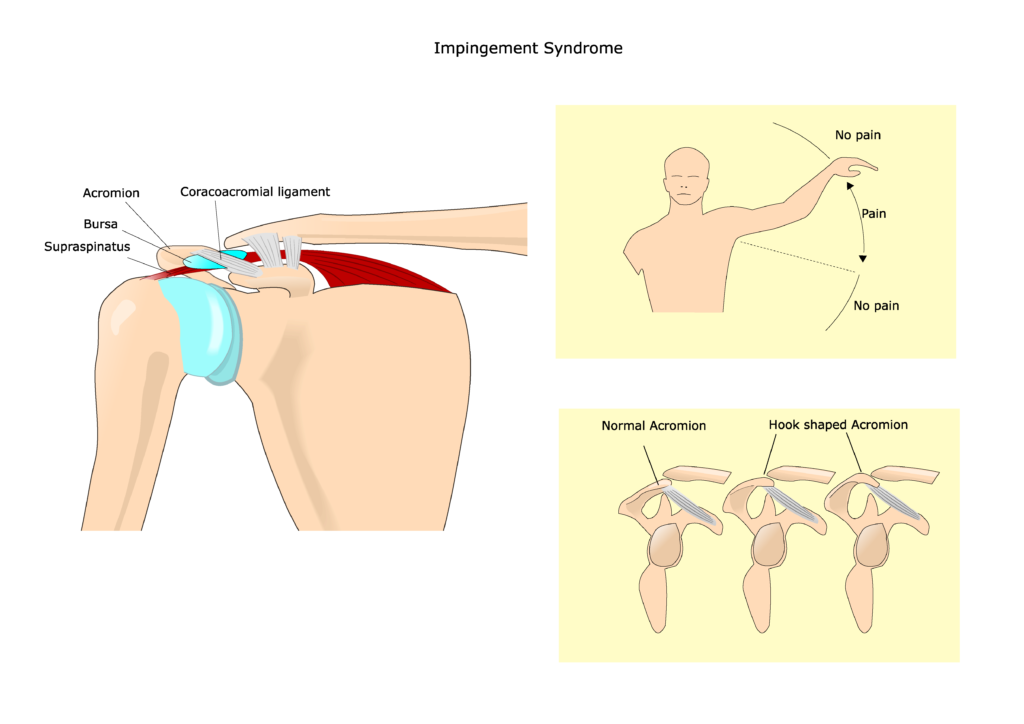
Labrum Tears From Bench Press
Some of the most impressive labrum tears I’ve ever seen have been caused by bench press. This has almost always been in powerlifters, people that have worked for years to be able to bench press hundreds of pounds. It’s a reminder that while your muscles can hypertrophy to lift very heavy weights, the cartilage and other structures in your joints don’t. They simply wear out!
AC Joint Pain During Bench Press
An injury unique to people that exercise excessively is distal clavicle osteolysis. The clavicle is your collarbone. And it’s a small bone, but during bench press and push-ups it takes a lot of stress. In some people, we see that the end of the collarbone at the shoulder can just start to dissolve away. It’s like the body gives up on trying to heal the damage and just decides to eliminate the problem entirely. Of course, that leads to its own problems!
5 Ways To Fix Shoulder Pain During Bench Press
To stop your shoulder from hurting during bench press, you have to take care of both overuse and poor technique. This applies no matter what kind of shoulder injury you have, or may be recovering from.
No matter what kind of exercise you are doing, you’ll want to keep your shoulders mobile and do regular rotator cuff exercises for your best performance.
But there are also specific changes to benchpress technique that help even more. The most important change when exercising with any joint pain is to decrease the amount of weight on the bar to a level that is comfortable. The second step is to improve your form and focus on proper power generation from your core to extremity.
1 – Decrease the Weight
The first step is deloading. That means taking the weight down to a comfortable level. Many people just refuse to do this. They worry too much about what other people will think of their lightweight bench press. Or they worry that they will lose their gains. But without the important step of deloading, nothing else will work.
Put your ego aside and help yourself. It’s a short-term loss for a long-term gain.
In my own experience with rotator cuff impingement, this often means dropping to 50% of your previous one rep max or even lower. It’s important to find this pain-free weight range and stay there. When I was rehabbing my own shoulder injury, I found I could do upwards of 14 reps or more at these lower weights without pain. But the pain returned if I increased the weight by even 10lbs. I was unable to do even one repetition at the slightly higher weight.
2 – Fix Your Bench Press Form
There are many minor faults that can be responsible for shoulder pain during bench press. The first of these is moving your hands too wide, forcing your arms and shoulders out to the side. The second is poor scapular stabilization. And the third is using only your upper body.
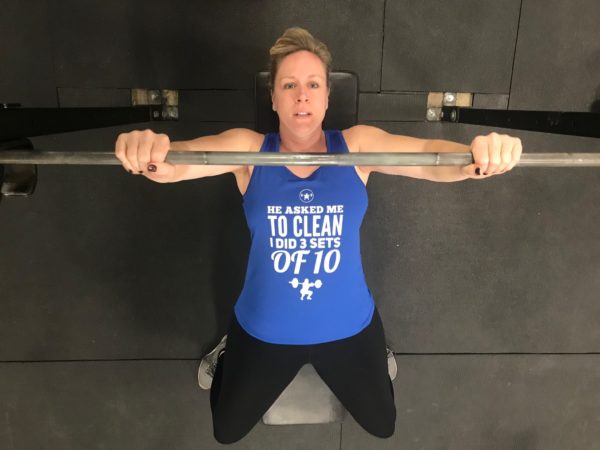
3 – Narrow Your Grip
Too many people make the mistake of bringing their arms out to nearly 90 degrees. This wide grip puts most of the key muscles in a bad position to perform the lift. It also increases the leverage of the bar on your shoulder, leading to excess strain. And this position also increases impingement on the rotator cuff.
The first thing you want to do is to narrow your grip and bring your elbows closer to the side of your body. This reduces the impingement on the rotator cuff compared to a wide-grip. Your arms shouldn’t be right at your sides, either. You want the arms to be about 45 degrees from your sides.
Alternatively, some people lack the wrist mobility to use a barbell properly. These people find that bringing the elbows closer to the body is either painful at the wrists, or just impossible to do. If this is the case, you should switch to dumbbells. This will allow you to keep the shoulders in the proper position without straining the wrists.
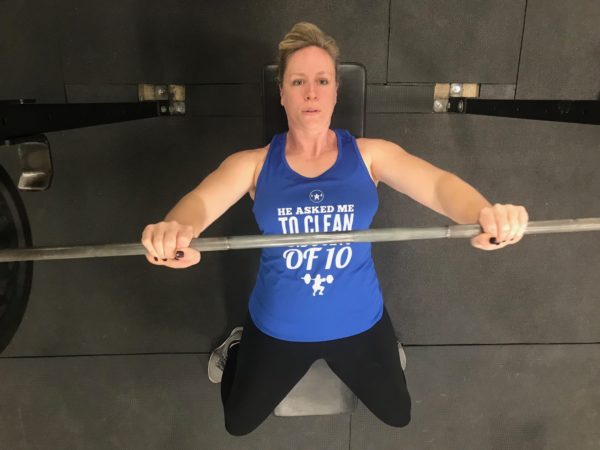
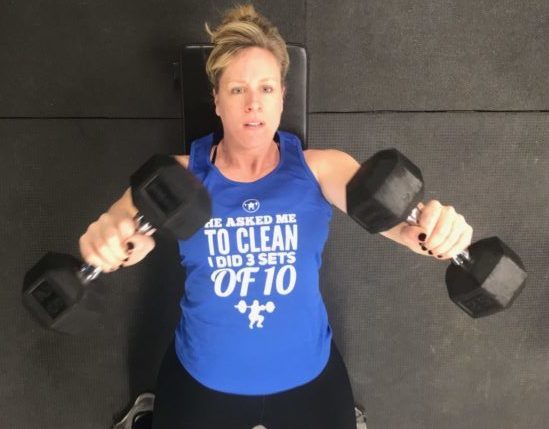
4 – Get Your Shoulders In Proper Position
Scapular stability is just as important as core stability. Scapular stability is the capacity to hold your shoulder blades retracted and depressed during upper body exercises. In English, this translates to “Squeeze your shoulder blades together, and don’t shrug.”
Keeping your shoulder blades down and back makes sure that the shoulder is as open as possible, which prevents free motion without impingement.
The first thing people notice when they do bench press with their shoulders stabilized properly is that their latissimus feels sore after bench pressing. It’s not something they are used to, but it actually means you are doing it right!
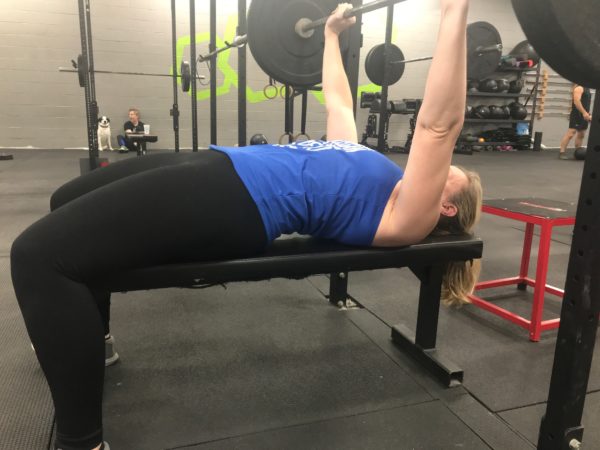
5 – Engage Your Core
The next step is to make sure your core is engaged and there is some arch to your back. There is a debate in lifting technique involving just how much a lifter should arch their back during a bench press. However, everyone agrees there should be some arch.
The arch is a very stable structure which can hold a lot of weight. We see this every day, from bridges to buildings and even the arch of your foot. Arching occurs naturally when you stabilize your scapulae while keeping tension in your core and legs. This allows you to have a solid base and push from your heels through your core and into the shoulders and arms.
And arching also changes the angle that your shoulders move relative to your body. This position allows you to engage the lower half of the pectoralis muscle during a bench press ensuring that you can use the entire muscle.
Some arching of the body also brings the chest up towards the bar. This is important because strain in the shoulder is usually greatest at the bottom of the press. By bringing the sternum up to meet the bar, you avoid that vulnerable position.
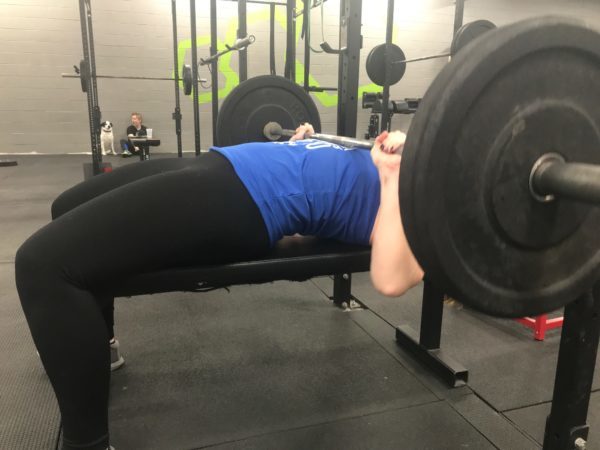
Bench Press Assistance

Thousands of people have used Mark Bell’s Slingshot to improve their bench press. It helps to keep your shoulders in the proper position to prevent pain and injuries. If you are having trouble keeping your form, this might be the solution!
Fix Your Shoulder Pain
All of these tips are ways to workout safely even if you have shoulder pain. But if your pain doesn’t go away after these adjustments you should go see a doctor for further evaluation and treatment.
Often, if you have irritated the shoulder, some simple exercises are the best way to get it feeling better. You can find some of the best exercises to fix your shoulder in this post.
Looking to schedule an appointment with Dr. Larson? You can contact his office HERE for an evaluation. His office is easily accessible from Maryland, Virginia, West Virginia, and D.C.
References:
The “bench‐presser’s shoulder”: an overuse insertional tendinopathy of the pectoralis minor muscle. Br J Sports Med; Aug 2007
Upper extremity weightlifting injuries: Diagnosis and management. J of Ortho; Mar 2018
This post contains affiliate links. If you want to purchase any of these items, please use the link in the article. Amazon doesn’t let us post the prices, so you’ve got to click the link to check them, sorry. We do get a small percentage of your purchase without costing you any more. The products may be available for purchase elsewhere but we appreciate it when you use our links, it helps to keep the servers running. Thanks for your support!

